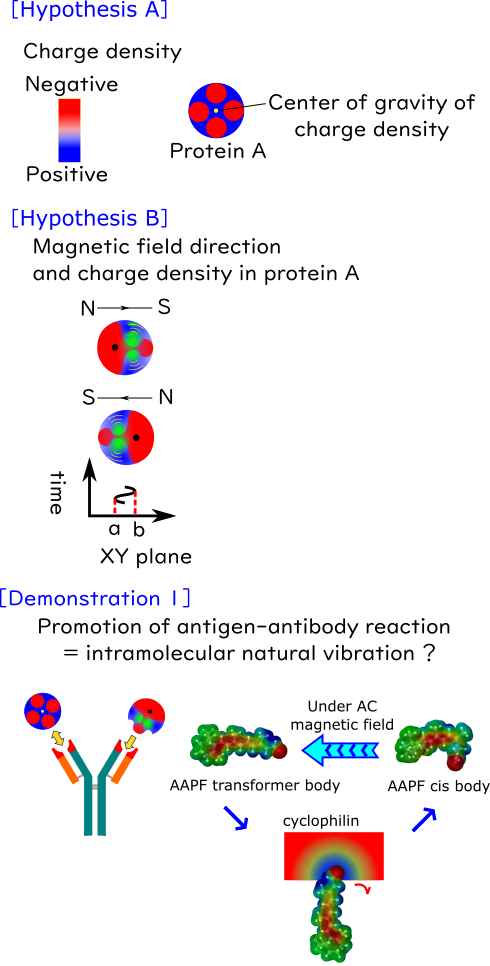
We make "YOUR FUTURE"
magnetic field (characteristic vibration)

A protein is a chain polymer compound formed by condensing an amino group and a carboxy group of an amino acid.
Amino acids have their own unique side chains, and can be classified into acidic / basic and hydrophilic / hydrophobic according to the type of side chain.
Protein cannot exert its physiological function as a protein only by the primary structure determined by the amino acid sequence.
It has a secondary structure called α-helix or β-sheet by folding with hydrogen bonds or van der Waals force.
Futhermore, specific combinations of secondary structures are locally assembled to form the tertiary structure of the protein as a whole. Tertiary structure is stabilized by the interaction between the side chains of amino acids,
which are constituents of proteins, and disulfide bonds, electrostatic attraction, and especially hydrophobic bonds contribute significantly.
Here, it is considered that the protein existing in the liquid phase has a charge bias, and therefore the protein has a center of gravity of the charge.[Hypothesis A]
It is easy to imagine that applying a fluctuating (alternating current) magnetic field to protein will affect the charge density of the protein.[Hypothesis B]
Dose the position variation of the center of gravity of the charge density affect the tertiary structure and induce a structural change? In addition, QCM (Quartz Crystal Microbalance) is used from the viewpoint of how it affects the intermolecular interaction represented by the antigen-antibody
reaction and the activity of peptidyl prolyl isomerase(PPIase)that we are interested in. We are conducting an experiment.
[Demonstration 1]